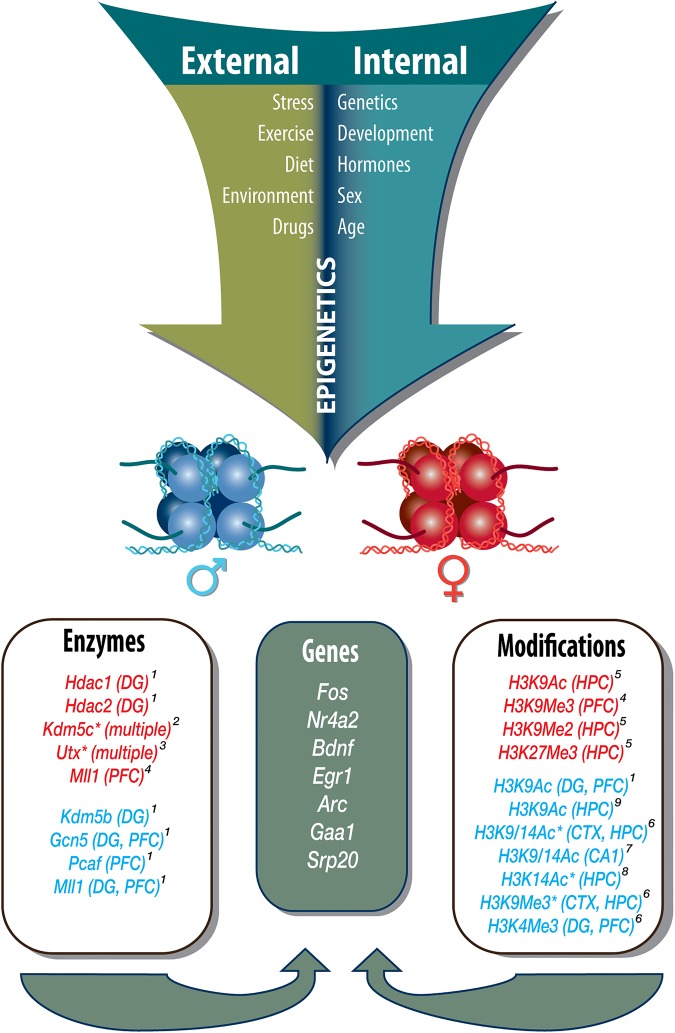Figure 1.
External and internal factors influence modification of the epigenome, potentially leading to sex differences in gene expression required for memory consolidation and retrieval. A number of external and internal factors are important modulators of histone modification in the female and male brain. A subset of histone modifications and enzymes listed reflect either a sex difference, with higher levels of a histone modification or a histone modifying enzyme, or reflect changes in a histone modification or histone modifying enzyme by one sex but not the other. Histone modifications or enzymes that are only observed in males, or reflect higher levels compared with females, are denoted in blue. Histone modifications or enzymes that are only affected in females are denoted in red. Differences between females and males are labeled with an asterisk. Histone modifications or enzymes without an asterisk reflect changes in one sex, but not the other, when compared to same-sex controls. Superscript numbers above brain regions denote references. Together, these modifications affect expression of memory-relevant genes; examples of genes associated with memory consolidation and retrieval are listed in the middle, many of which are found to be differentially expressed between females and males. (CTX) cortex, (HPC) hippocampus, (DG) dentate gyrus, (PFC) prefrontal cortex. References: (1Tyler et al. 2015; 2Xu et al. 2008a; 3Xu et al. 2008b; 4Huang et al. 2007; 5Sobolewski et al. 2018; 6Tsai et al. 2009; 7Sase et al. 2019; 8Benoit et al. 2015; 9Glendining and Jasoni 2019).

